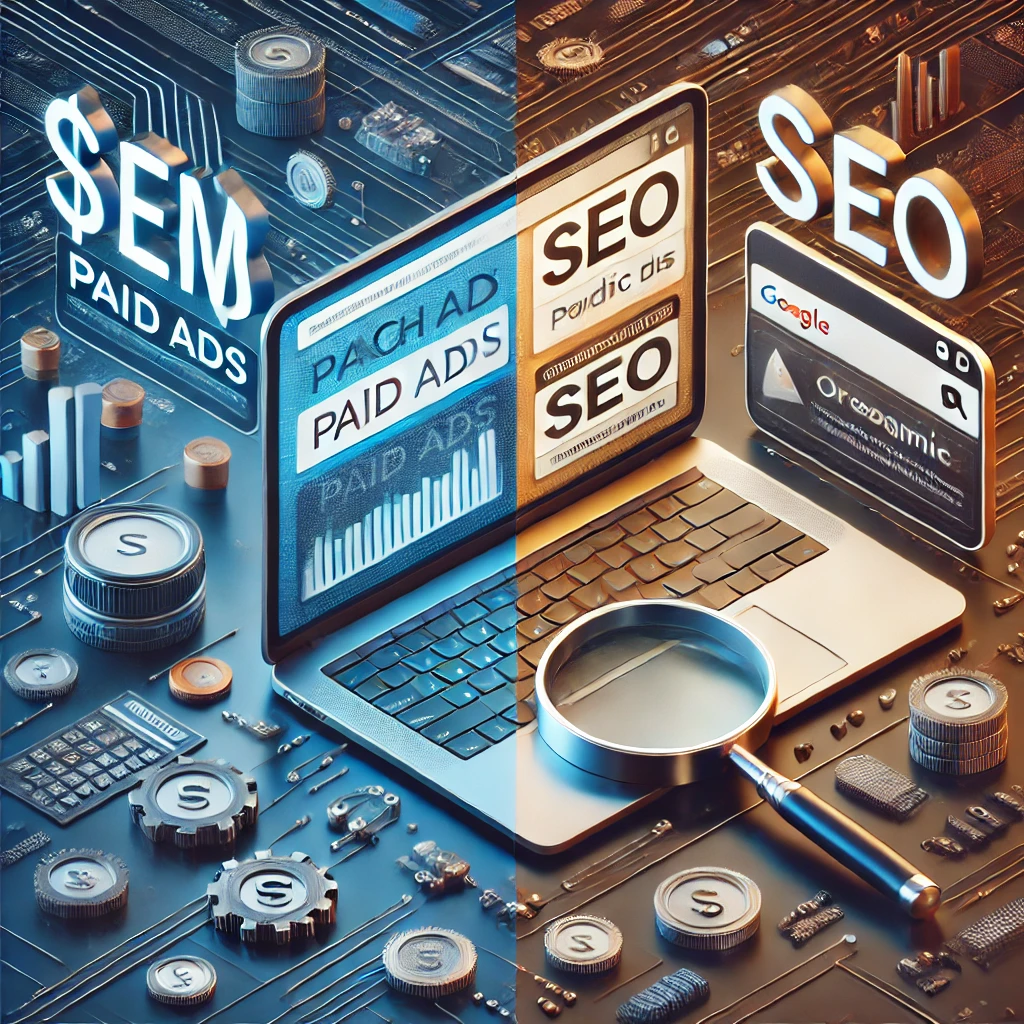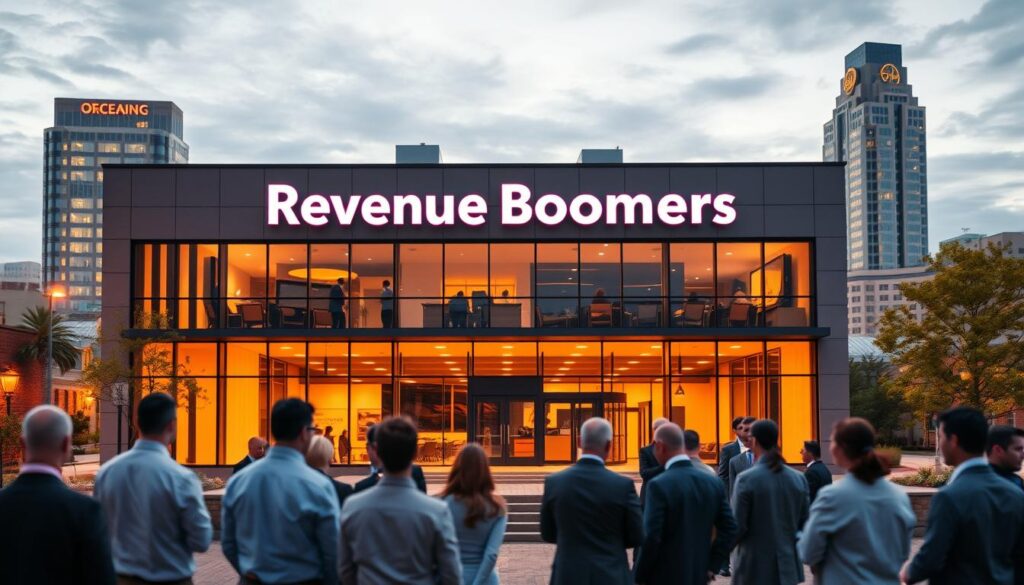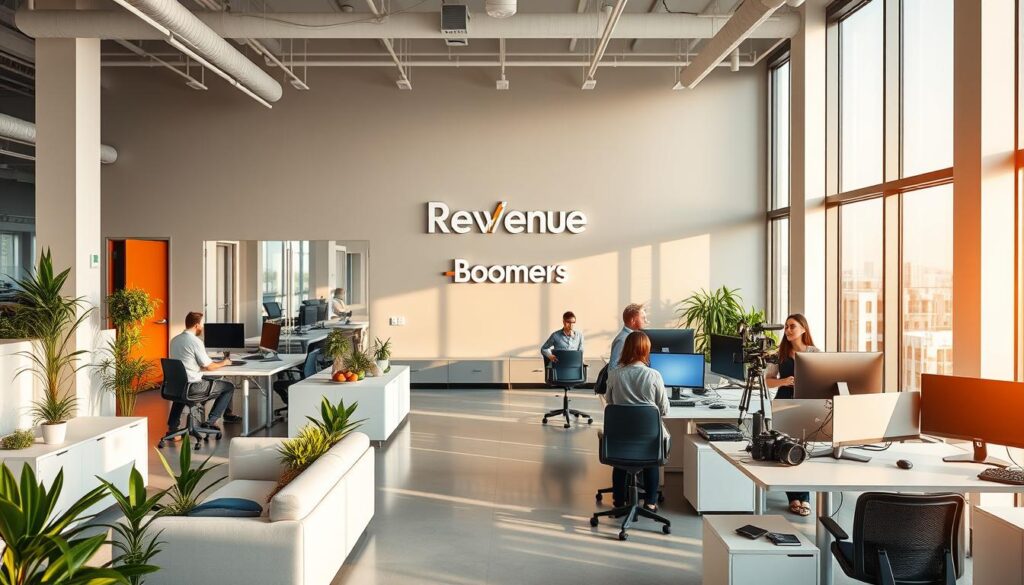Introduction
In today’s competitive digital landscape, businesses need to leverage every tool available to stand out online. Search Engine Marketing (SEM) is a powerful strategy that increases visibility, drives traffic, and helps businesses connect with potential customers. But how does SEM differ from Search Engine Optimization (SEO), and how can they work together to strengthen your online presence? This guide covers everything you need to know about SEM and its synergy with SEO, providing a roadmap for maximizing both paid and organic search strategies. Book a free consultation with Revenue Boomers to learn how our SEM and SEO services can help you reach your business goals.
Table of Contents
- What is Search Engine Marketing?
- The Difference Between SEM and SEO
- Benefits of Combining SEO with SEM
- Key Components of SEM
- Pay-Per-Click (PPC) Advertising
- Ad Auction and Quality Score
- Keyword Research for SEM
- Ad Copywriting and Optimization
- Landing Page Optimization
- Essential Tools for SEM Success
- Developing an Effective SEM Strategy
- FAQs
- How Revenue Boomers Can Boost Your SEM and SEO Performance
What Is Search Engine Marketing?
Search Engine Marketing (SEM) is a digital marketing strategy aimed at increasing a business’s visibility on search engine results pages (SERPs) through paid advertising. Unlike SEO, which boosts organic rankings, SEM focuses on paid strategies, such as Pay-Per-Click (PPC) ads, that instantly place businesses at the top of search results. SEM helps businesses attract targeted traffic, generating immediate results and measurable performance.
The Difference Between SEM and SEO
While both SEM and SEO aim to increase visibility on search engines, they achieve it through different methods:
- SEM (Search Engine Marketing): Involves paid strategies like PPC ads to appear at the top of SERPs. SEM allows for immediate placement, making it ideal for businesses seeking quick results. With SEM, you control when and where your ads appear, targeting specific keywords for a fee.
- SEO (Search Engine Optimization): Focuses on optimizing a website’s content, structure, and technical aspects to improve organic (unpaid) search rankings. SEO is a long-term investment that increases visibility gradually but sustainably, attracting high-quality traffic without continuous spending.
Key Differences
- Cost: SEM costs are ongoing as businesses pay per click, while SEO requires an initial investment and ongoing maintenance.
- Timeline: SEM provides instant visibility, while SEO takes time to build rankings but offers lasting results.
- Purpose: SEM works best for immediate traffic and time-sensitive campaigns, while SEO focuses on long-term growth and credibility.
Benefits of Combining SEO with SEM
Combining SEO and SEM strategies provides a comprehensive approach to online visibility, allowing businesses to capture both short-term and long-term gains.
- Increased Visibility Across Search Results: By appearing in both organic and paid results, your business dominates more SERP real estate, increasing click-through rates and brand recognition.
- Enhanced Data Insights: SEM provides valuable data on keywords, click-through rates, and conversion metrics, which can inform your SEO strategy. For instance, high-performing SEM keywords can be integrated into your SEO content for better organic rankings.
- Improved Conversion Rates: SEO establishes your brand’s authority and trustworthiness, which complements SEM’s immediate exposure. As customers become familiar with your brand through repeated exposure, they are more likely to convert.
- Cost-Effective Optimization: SEM identifies high-value keywords that drive traffic, helping refine your SEO focus. Over time, SEO helps reduce SEM spending by generating more organic traffic, creating a sustainable approach.
Key Components of SEM
1. Pay-Per-Click (PPC) Advertising
PPC is a central aspect of SEM, where you pay for each click on your ad. This method allows for control over your budget, as you can set spending limits and adjust based on performance.
Types of PPC Ads:
- Search Ads: Appear at the top of SERPs based on targeted keywords.
- Display Ads: Visual ads shown across the Google Display Network.
- Shopping Ads: Product-based ads ideal for e-commerce.
- Remarketing Ads: Target users who have previously visited your site to increase conversions.
2. Ad Auction and Quality Score
In SEM, ads are ranked based on a combination of bid amount and Quality Score. Quality Score, influenced by ad relevance, expected click-through rate (CTR), and landing page experience, impacts cost and ad position.
Tips for Improving Quality Score:
- Use Relevant Keywords: Choose terms that align with searcher intent.
- Write Engaging Ad Copy: Ensure your copy resonates with your target audience.
- Optimize Landing Pages: Ensure that landing pages offer a seamless experience aligned with the ad.
Improving Quality Score can lower costs and increase ad visibility, making it essential for a successful SEM campaign.
3. Keyword Research for SEM
Keyword research ensures that your ads target the right audience. Use a combination of high-intent and long-tail keywords to capture specific searchers.
Types of Keywords:
- Branded Keywords: Include your business name for brand-focused searches.
- Commercial Intent Keywords: Use words like “buy” or “discount” for high-conversion intent.
- Negative Keywords: Exclude irrelevant terms to avoid wasting ad spend.
Keyword research tools like Google Keyword Planner and SEMrush provide valuable insights into search volume, competition, and cost-per-click (CPC), guiding your keyword strategy.
4. Ad Copywriting and Optimization
Ad copy should be clear, engaging, and aligned with user intent. Well-written copy encourages clicks and helps improve Quality Score.
Best Practices:
- Incorporate Keywords: Use main keywords in the headline to improve relevance.
- Highlight Unique Benefits: Showcase what makes your business stand out.
- Include a Strong CTA: Guide users with calls-to-action like “Get a Free Estimate” or “Shop Now.”
- A/B Testing: Test different ad versions to see what resonates best with your audience.
5. Landing Page Optimization
The landing page experience plays a vital role in SEM success. It should be optimized for conversions, providing a seamless transition from the ad to the action you want users to take.
Landing Page Tips:
- Align Content with Ads: Ensure consistency between the ad message and landing page content.
- Optimize for Mobile: Most users browse on mobile devices, so a responsive design is essential.
- Include Clear CTAs: Make it easy for users to complete actions like signing up or purchasing.
- Use Trust Signals: Add testimonials or security badges to build credibility.
Landing page optimization not only improves conversions but also contributes to a higher Quality Score.
Essential Tools for SEM Success
The right tools provide data insights and simplify campaign management.
- Google Ads: The primary platform for managing Google-based PPC campaigns.
- Microsoft Advertising: Enables PPC on Bing and Yahoo.
- SEMrush and Ahrefs: Advanced tools for tracking, keyword research, and competitor analysis.
- Google Analytics: Analyzes site performance and user behavior.
- Unbounce and Instapage: Landing page builders designed for optimization and A/B testing.
Developing an Effective SEM Strategy
- Define Clear Goals: Determine what you want to achieve (e.g., leads, sales, brand awareness).
- Identify Your Audience: Understand who your ideal customers are and what they’re searching for.
- Select Target Keywords: Conduct thorough keyword research to maximize ad relevancy and reach.
- Set a Budget: Establish a budget and adjust based on performance metrics.
- Create Compelling Ads: Write ads that address user pain points and offer solutions.
- Optimize Landing Pages: Align landing page content with the ad to encourage conversions.
- Track and Adjust: Use tools to monitor performance, test variations, and make data-driven adjustments.
A structured SEM strategy helps maximize results and drive growth efficiently.
FAQs
What is the Difference Between SEM and SEO?
SEM involves paid strategies, like PPC, to appear at the top of search results, while SEO focuses on organic ranking through content and technical optimization. SEM provides immediate results, while SEO builds long-term visibility.
How Can SEM and SEO Work Together?
Combining SEM and SEO increases visibility by capturing both paid and organic search results. SEM provides data that can improve SEO keyword targeting, while SEO establishes brand credibility, enhancing SEM campaigns’ effectiveness.
How Much Should I Budget for SEM?
SEM budgets vary depending on competition, keywords, and industry. With PPC, you control costs by setting a maximum bid per click. Testing and adjusting can help optimize budget allocation.
Is SEM Suitable for Small Businesses?
Yes, SEM is effective for small businesses, offering targeted reach and budget flexibility. Small businesses can compete with larger companies by strategically targeting relevant keywords.
How Can Revenue Boomers Help with SEM and SEO?
Revenue Boomers provides tailored SEM and SEO solutions that increase online visibility, drive traffic, and boost conversions. Schedule a consultation to explore how we can help grow your business online.
How Revenue Boomers Can Boost Your SEM and SEO Performance
Maximizing online visibility requires a balanced approach. At Revenue Boomers, we offer a comprehensive suite of SEM and SEO services designed to build brand authority, attract quality leads, and drive sustained growth. Learn more about our SEM and SEO services and let us help you reach new heights in digital marketing.






